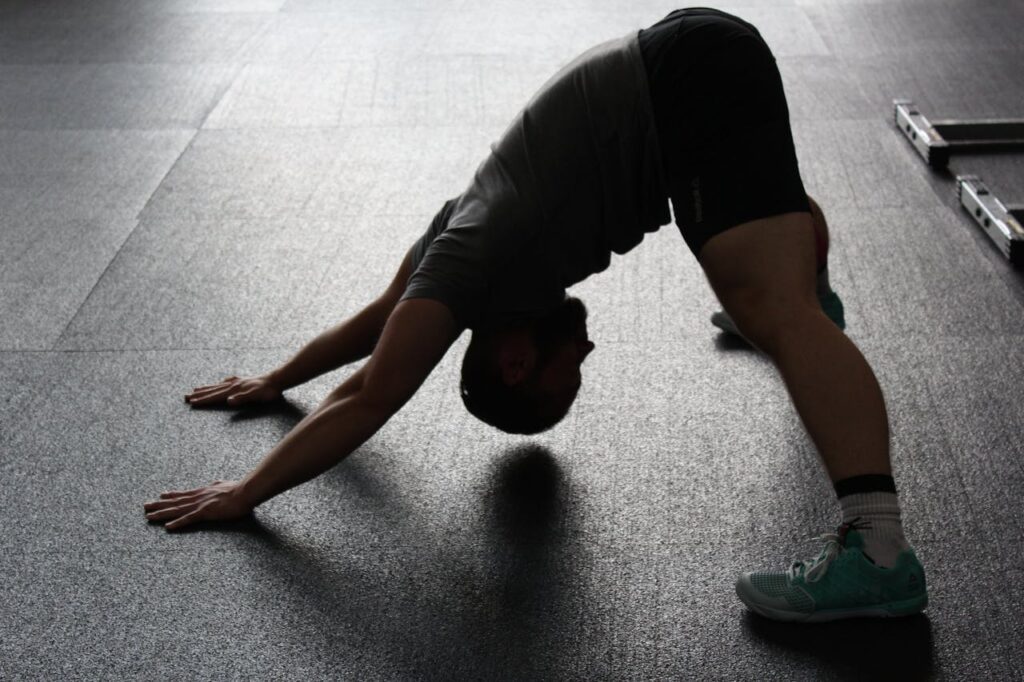When it comes to strength training, most people focus on lifting heavier weights and pushing their limits. However, an often overlooked yet essential component of a successful strength training regimen is mobility. Good mobility not only enhances performance but also plays a critical role in injury prevention, muscle activation, and overall efficiency of movement. In this blog, we will explore why incorporating mobility work into your strength training routine is vital for achieving your fitness goals. From improving range of motion and posture to promoting balanced muscle development and functional strength, the benefits of mobility are vast and indispensable. Let’s dive into the myriad ways that good mobility can elevate your strength training and help you unlock your full potential.
What is Mobility training?
Mobility training refers to exercises and routines designed to improve the range of motion and control within the joints and muscles of the body. Unlike flexibility, which primarily focuses on the ability to stretch muscles, mobility encompasses both flexibility and the strength needed to move through a full range of motion efficiently and safely. Mobility training aims to enhance joint function, increase movement quality, and support overall physical performance.
Key Components of Mobility Training:
-
- Joint Range of Motion (ROM):
-
- Mobility training targets the maximum distance and direction a joint can move within its potential range. This includes exercises that improve the articulation of joints like the hips, shoulders, ankles, and thoracic spine.
-
- Joint Range of Motion (ROM):
-
- Muscle Flexibility:
-
- Stretching and lengthening the muscles to ensure they can move freely without restriction. Flexibility is a subset of mobility, important for allowing joints to achieve their full range of motion.
-
- Muscle Flexibility:
-
- Strength and Stability:
-
- Building strength in the muscles surrounding joints to support and control movement. This prevents injury and enhances the efficiency of movements.
-
- Strength and Stability:
-
- Neuromuscular Control:
-
- Improving the communication between the nervous system and muscles to coordinate movement patterns effectively. This ensures smooth and controlled motion through different activities.
-
- Neuromuscular Control:
So, How does Mobility training Benefit Strength Training:
Well good mobility significantly impacts the body’s ability to recruit motor units, which are essential for muscle activation and efficient movement. Here’s how:
1. Enhanced Range of Motion (ROM)
-
- Improved Joint Movement: Good mobility allows joints to move through their full range of motion. When joints can move freely, muscles can contract more fully and effectively, leading to better recruitment of motor units.
-
- Optimal Muscle Length: Mobility ensures muscles are at an optimal length-tension relationship, where they can generate the most force. This optimal position allows for more effective motor unit recruitment during muscle contractions.
2. Better Muscle Activation
-
- Increased Neural Drive: With good mobility, the nervous system can send stronger signals to muscles. This increased neural drive helps in recruiting more motor units, especially the high-threshold motor units responsible for powerful contractions.
-
- Balanced Muscle Engagement: Mobility prevents compensatory patterns where some muscles might be overused while others are underused. Balanced muscle engagement means that all relevant motor units are recruited efficiently during movements.
3. Improved Movement Patterns
-
- Correct Form and Technique: Proper mobility ensures that exercises and movements are performed with correct form. Good technique requires the right muscles to be activated at the right time, which enhances motor unit recruitment.
-
- Functional Movement: Mobility supports functional movement patterns that mimic everyday activities. These patterns require coordinated muscle activation, improving the body’s ability to recruit motor units in a synchronized manner.
4. Reduced Inhibition
-
- Decreased Muscle Tightness: Tight muscles can inhibit motor unit recruitment by restricting movement and causing discomfort. Mobility exercises help reduce muscle tightness, allowing for better activation of motor units.
-
- Lowered Neuromuscular Inhibition: Poor mobility can lead to protective mechanisms where the body limits muscle activation to prevent injury. Enhancing mobility reduces this inhibition, allowing for more complete motor unit recruitment.
5. Improved Coordination and Stability
-
- Better Joint Stability: Mobility training often includes stability work, which enhances joint stability. Stable joints allow for more controlled and powerful muscle contractions, leading to better motor unit recruitment.
-
- Enhanced Proprioception: Mobility exercises improve proprioception, the body’s ability to sense its position and movement in space. Improved proprioception enhances coordination and the precise recruitment of motor units.
6. Increased Muscle Strength and Power
-
- Strength Gains: As mobility improves, muscles can be worked through their full range of motion, leading to greater strength gains. Stronger muscles can recruit more motor units more effectively.
-
- Power Development: Power, the ability to exert force quickly, relies on the rapid and efficient recruitment of motor units. Good mobility allows for explosive movements, enhancing the recruitment of motor units needed for power.
Summary
Good mobility enhances the body’s ability to recruit motor units by improving range of motion, muscle activation, movement patterns, and reducing neuromuscular inhibition. This leads to more efficient and powerful muscle contractions, better performance, and reduced risk of injury. Start by adding mobility work into your warm up and see how your strength training dramatically improves, with pain free training.
Mobility exercises here: https://www.onepeloton.ca/blog/mobility-exercises/
To Get Started click here: https://enhancestrength.ca/contact/

